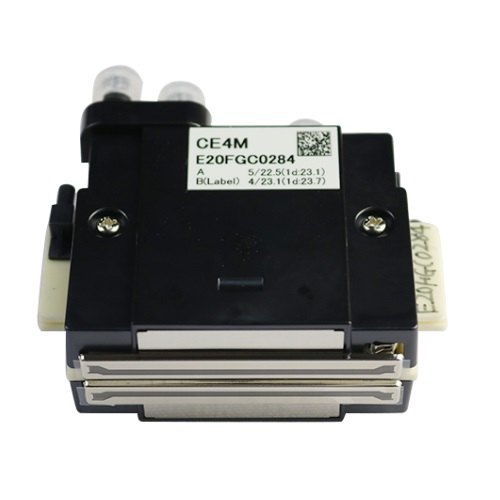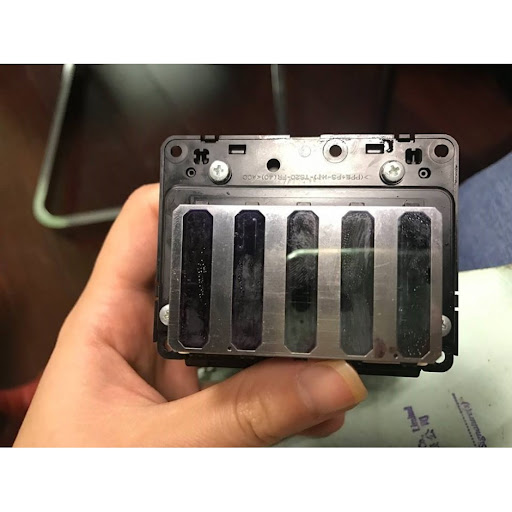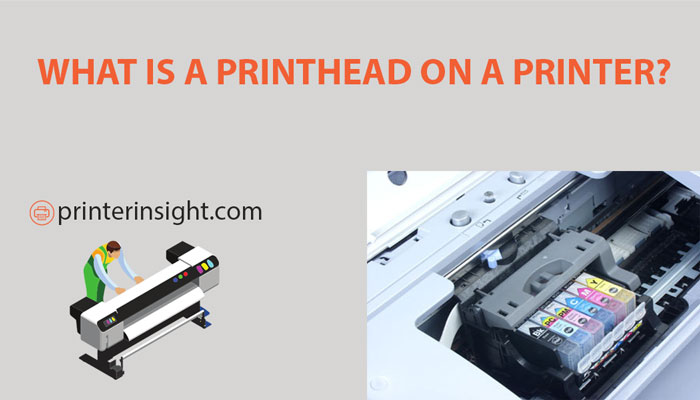Ever wondered how your computer printers print different shapes or text on paper?
Well, they do it with the help of printheads. But what is a printhead on a printer, and how does it work?
Let’s find out.
What Is The Printhead?
The printhead is a device inside inkjet printers that sprinkles ink into the paper to form texts and different shapes. To make it simple, they are the prime reason behind printing.
Before print heads were invented, the printing process was inefficient and expensive. Because the printing companies needed to create different shape presses for printing. But with the help of printheads, this process has become fast and comparatively inexpensive. Now let’s find out how it works.
How Do Printheads Work?
The working process of printheads is quite complex. So, let me make it simple for you.
Every printhead is connected with a precision stepper motor that moves around a cogged belt. They allow the printhead to run backward and forward line-wise above the paper or media. In this process, the printhead sprays droplets of ink into the paper forming the text and shapes.
Most modern printheads contain the main color chamber above them and a nozzle below to spray the ink. However, older printheads have different chambers for inks. The ink chambers fed the small ink cell above the printheads with ink. Then they spray the ink into the paper.
Usually, each head contains one ink nozzle. So, for efficiency, modern printheads contain an array of heads. But are all print heads the same?
No, there are different types of printheads. Moreover, to have a deep understanding of print heads’ working mechanism, we need to know about the types of print heads.
Types Of Printheads
Generally, there are two types of printheads. They are
- Thermal Printheads
In the thermal inkjet print heads, heat is used to create an air bubble of water-based ink vapor. When the air bubble explodes, the ink vapor is sprayed through the tiny nozzles of the head into the paper. This sprayed ink produces words and shapes.
After spreading the ink, the thermal printhead quickly cools itself down and repeats the same process constantly until a page is printed fully.

Present-day thermal inkjet print heads contain 300- 400 tiny printing nozzles. Each of these nozzle channels can sprinkle 4-5 picoliters of ink. Moreover, every nozzle channel has its own heat-up mechanism that can heat-up up to 300 °C within 100 microseconds. But which are the thermal printhead printers?
Generally, all the small consumer-grade/office inkjet printers are thermal printers. Canon, HP, and Brothers inkjet printers use thermal print head technology. These thermal printhead printers are budget-friendly and easy to troubleshoot. That’s why they are found almost everywhere.
- Mechanical Printhead
Mechanical inkjet printheads are also known as Piezo print heads. The printing process of Piezo print heads is entirely different from thermal print heads.
Instead of using heat, the Mechanical printheads use a thin film. An electric charge is thrown at the film. This causes a vibration in the thin film, which creates pressure and forces the ink out of the nozzle.
This entire process happens within 5 microseconds, and these printheads can sprinkle 3 to 40 picoliters of ink. As a result, the piezo printhead printers are more precise and efficient.

However, only Epson uses mechanical inkjet printheads in both their consumer and enterprise-grade printers. So, Piezo print heads are pretty rare. Moreover, they are expensive and can’t be troubleshooted easily. To troubleshoot piezo printhead printers, a trained technician is needed.
But the plus point of mechanical printheads is they last longer than thermal printhead printers. Furthermore, they have close to 700 nozzles and support multiple types of ink.
These are the two major printhead types and their working mechanism. Now let’s have a look at some of the queries related to this question.
FAQs
- What does it mean when your printer says there is a problem with the printhead?
It’s common for older HP and other printers to show “Printhead Failure”, “Problem with printhead” messages on the computer screen. Generally, these messages mean there is a problem with the printhead electrical circuit or anything related to the electrical connection with the printhead.
- When should you replace a printhead?
Typically, thermal printheads can deliver 1.5-2 years of service without losing quality or showing any problem. However, piezo print heads should serve 3 years without any issues.
But you should replace the printheads of your printer when your printer gives printhead issue messages and start losing printing quality.
- Can printhead be fixed?
Yes, if there is an alignment problem, minor electrical circuit problem, printhead dry-up problem, then a printhead can be easily fixed. However, if the print head starts losing its quality or completely stops working, then it might not be fixed.
- How do I know if my printhead is bad?
A bad print head can show the below symptoms
- They create stripes across the entire page.
- A lousy print head provides an improper and uneven color. There might be signs of color fade also.
- A dying print head creates superbubble and stops providing inks.
If your printhead shows the above symptoms, you should immediately change the printhead.
- How fast does a print head dry up?
Actually, it depends on the ink type, ink quality, weather, humidity, and room temperature. However, if a printer is kept for 3-4 weeks without usage, then there is a high chance the print head is dried up.
Conclusion
This is everything you need to know about “What Is A Printhead On A Printer”. The printhead is a complex component and the working mechanism is even more complicated.
However, this article tried to make this topic as simple as possible. But if you still have any questions, please let us know in the comments.
Lastly, if you need assistance in cleaning your print head, check out our article on “How to clean print inkjet printheads.”
You May Also Like:




